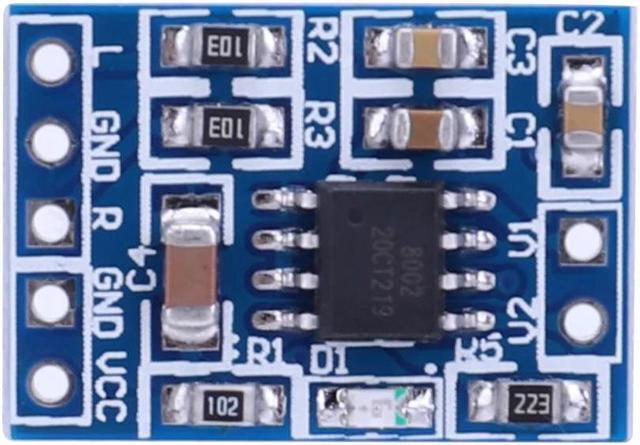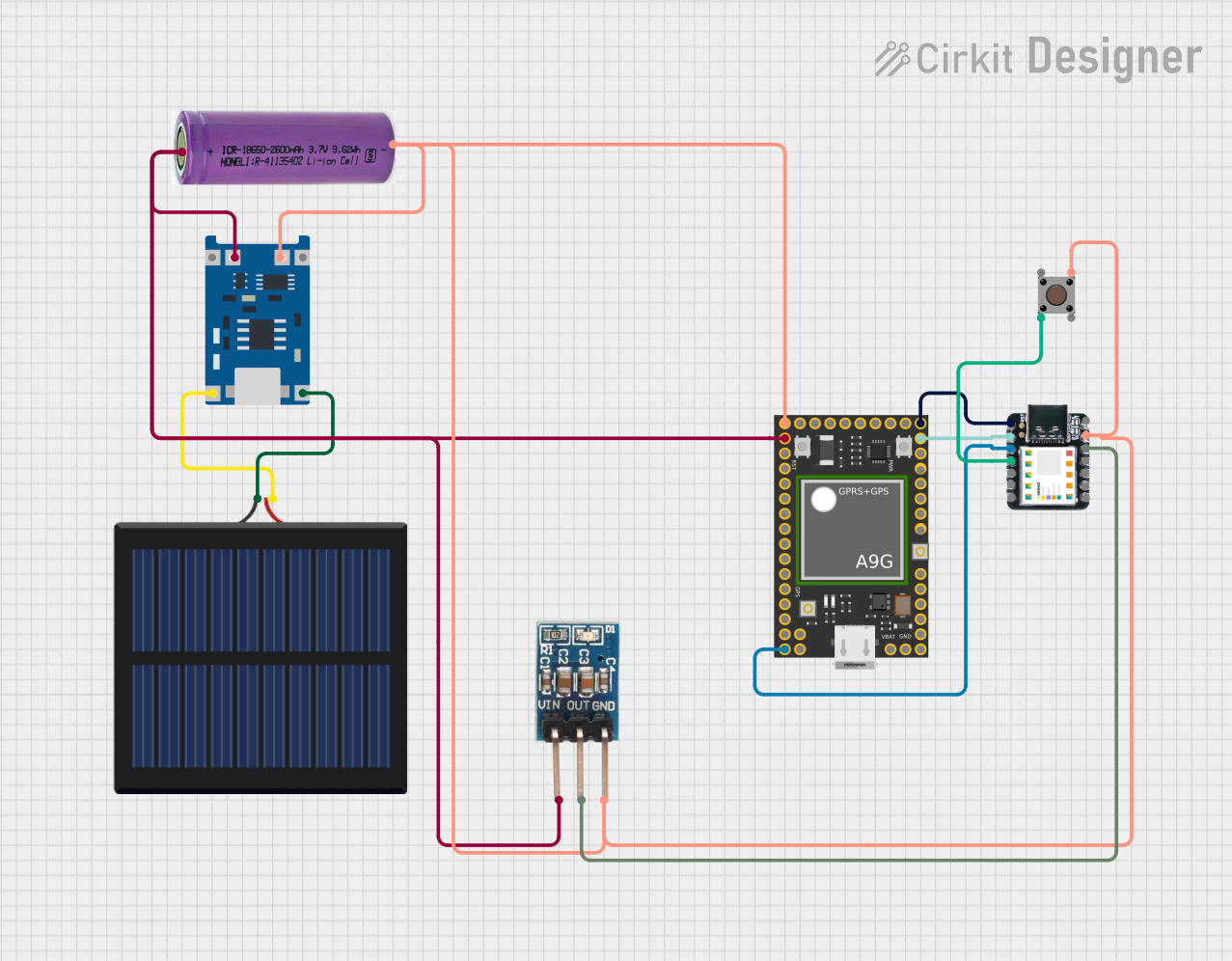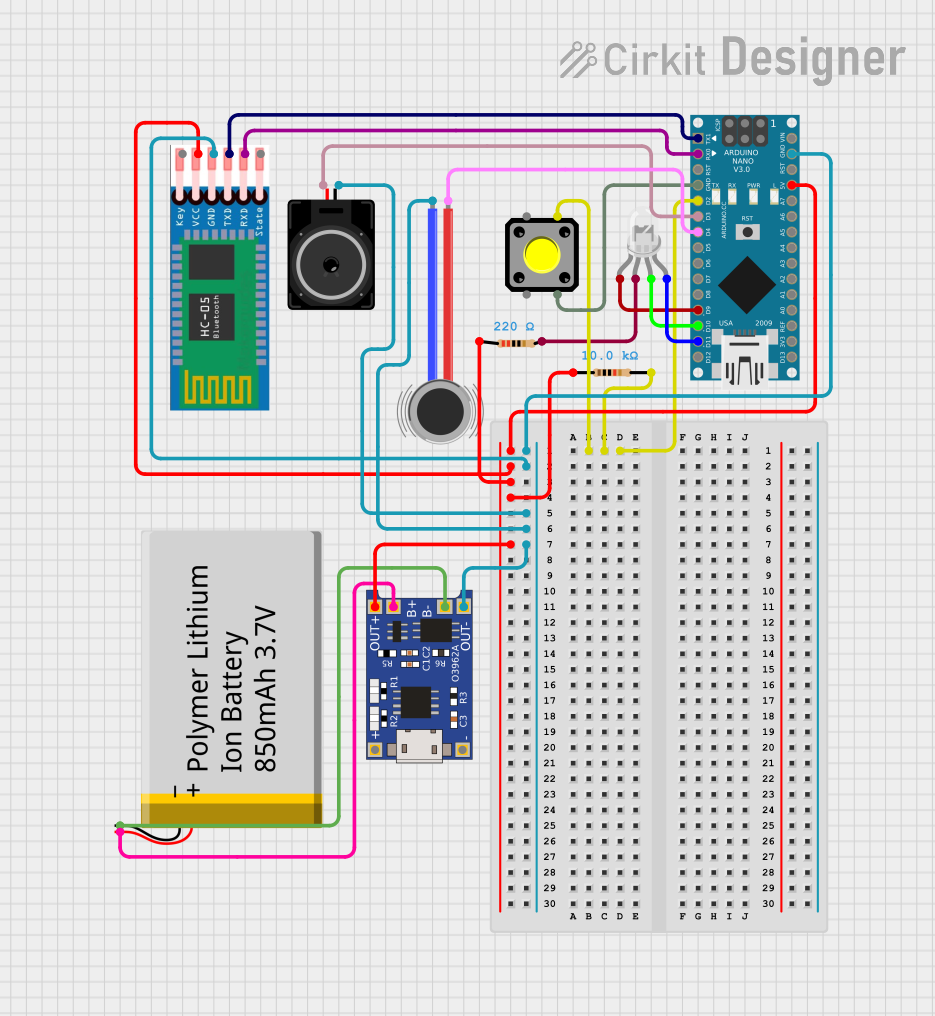
How to Use HXJ8002: Examples, Pinouts, and Specs

 Design with HXJ8002 in Cirkit Designer
Design with HXJ8002 in Cirkit DesignerIntroduction
The HXJ8002 is a high-performance integrated circuit (IC) designed for use in a variety of electronic applications, including power management and signal processing. This IC is known for its low power consumption and high efficiency, making it an ideal choice for battery-operated devices. Its compact design and robust functionality allow it to be used in portable audio systems, small amplifiers, and other low-power electronic devices.
Explore Projects Built with HXJ8002

 Open Project in Cirkit Designer
Open Project in Cirkit Designer
 Open Project in Cirkit Designer
Open Project in Cirkit Designer
 Open Project in Cirkit Designer
Open Project in Cirkit Designer
 Open Project in Cirkit Designer
Open Project in Cirkit DesignerExplore Projects Built with HXJ8002

 Open Project in Cirkit Designer
Open Project in Cirkit Designer
 Open Project in Cirkit Designer
Open Project in Cirkit Designer
 Open Project in Cirkit Designer
Open Project in Cirkit Designer
 Open Project in Cirkit Designer
Open Project in Cirkit DesignerCommon Applications
- Portable audio amplifiers
- Battery-powered devices
- Signal processing circuits
- Low-power consumer electronics
Technical Specifications
The HXJ8002 is a Class-D audio amplifier IC with the following key specifications:
| Parameter | Value |
|---|---|
| Supply Voltage (VDD) | 2.0V to 5.5V |
| Output Power | 3W @ 4Ω, 10% THD+N, VDD = 5V |
| Efficiency | Up to 90% |
| Quiescent Current | < 6mA |
| Shutdown Current | < 0.1µA |
| Operating Temperature | -40°C to +85°C |
| Gain Settings | Fixed gain (20dB, 26dB, 32dB, 36dB) |
| Output Load | 4Ω or 8Ω |
Pin Configuration and Descriptions
The HXJ8002 is typically available in an 8-pin SOP (Small Outline Package). Below is the pinout and description:
| Pin Number | Pin Name | Description |
|---|---|---|
| 1 | IN+ | Non-inverting audio input |
| 2 | IN- | Inverting audio input |
| 3 | VDD | Power supply (2.0V to 5.5V) |
| 4 | GND | Ground |
| 5 | OUT+ | Positive differential audio output |
| 6 | OUT- | Negative differential audio output |
| 7 | SHDN | Shutdown control (active low) |
| 8 | BYPASS | Bypass capacitor connection for internal biasing |
Usage Instructions
How to Use the HXJ8002 in a Circuit
- Power Supply: Connect the VDD pin to a stable power source within the range of 2.0V to 5.5V. Ensure proper decoupling by placing a 0.1µF ceramic capacitor close to the VDD pin.
- Audio Input: Connect the audio signal to the IN+ and IN- pins. For single-ended input, connect IN- to ground through a capacitor.
- Output Load: Connect a speaker (4Ω or 8Ω) to the OUT+ and OUT- pins. Use proper wiring to minimize noise and distortion.
- Shutdown Control: To enable the IC, ensure the SHDN pin is pulled high. Pulling it low will place the IC in a low-power shutdown mode.
- Bypass Capacitor: Connect a capacitor (typically 1µF) between the BYPASS pin and ground to stabilize the internal bias voltage.
Important Considerations
- Thermal Management: Ensure adequate heat dissipation, especially when driving high-power loads.
- PCB Layout: Minimize the trace length for audio input and output signals to reduce noise.
- Decoupling: Use proper decoupling capacitors near the power supply pin to ensure stable operation.
Example: Connecting HXJ8002 to an Arduino UNO
The HXJ8002 can be used with an Arduino UNO to amplify audio signals. Below is an example of how to control the SHDN pin using the Arduino:
Circuit Connections
- Connect the SHDN pin of the HXJ8002 to a digital pin on the Arduino (e.g., pin 7).
- Connect the audio input (e.g., from a DAC or audio source) to the IN+ and IN- pins.
- Connect the speaker to the OUT+ and OUT- pins.
Arduino Code
// Example code to control the HXJ8002 SHDN pin using Arduino UNO
#define SHDN_PIN 7 // Define the Arduino pin connected to HXJ8002 SHDN pin
void setup() {
pinMode(SHDN_PIN, OUTPUT); // Set SHDN_PIN as an output
digitalWrite(SHDN_PIN, HIGH); // Enable the HXJ8002 (active high)
}
void loop() {
// Example: Toggle the HXJ8002 on and off every 5 seconds
digitalWrite(SHDN_PIN, LOW); // Disable the HXJ8002
delay(5000); // Wait for 5 seconds
digitalWrite(SHDN_PIN, HIGH); // Enable the HXJ8002
delay(5000); // Wait for 5 seconds
}
Troubleshooting and FAQs
Common Issues
No Output Sound
- Cause: SHDN pin is not properly configured.
- Solution: Ensure the SHDN pin is pulled high to enable the IC.
Distorted Audio
- Cause: Insufficient power supply or incorrect input signal levels.
- Solution: Verify the power supply voltage and ensure the input signal is within the recommended range.
Overheating
- Cause: Driving a low-impedance load or inadequate heat dissipation.
- Solution: Use a proper heatsink or ensure the load impedance is within the specified range (4Ω or 8Ω).
High Noise or Humming
- Cause: Poor PCB layout or long input/output traces.
- Solution: Minimize trace lengths and use proper grounding techniques.
FAQs
Q1: Can the HXJ8002 drive a 2Ω speaker?
A1: No, the HXJ8002 is designed for 4Ω or 8Ω loads. Using a 2Ω load may cause overheating or damage.
Q2: What is the purpose of the BYPASS pin?
A2: The BYPASS pin is used to connect a capacitor for stabilizing the internal bias voltage, which helps reduce noise.
Q3: Can I use the HXJ8002 with a 3.3V power supply?
A3: Yes, the HXJ8002 operates within a supply voltage range of 2.0V to 5.5V, so 3.3V is within the acceptable range.
Q4: How do I reduce power consumption in my circuit?
A4: Use the SHDN pin to place the IC in shutdown mode when not in use. This reduces current consumption to less than 0.1µA.